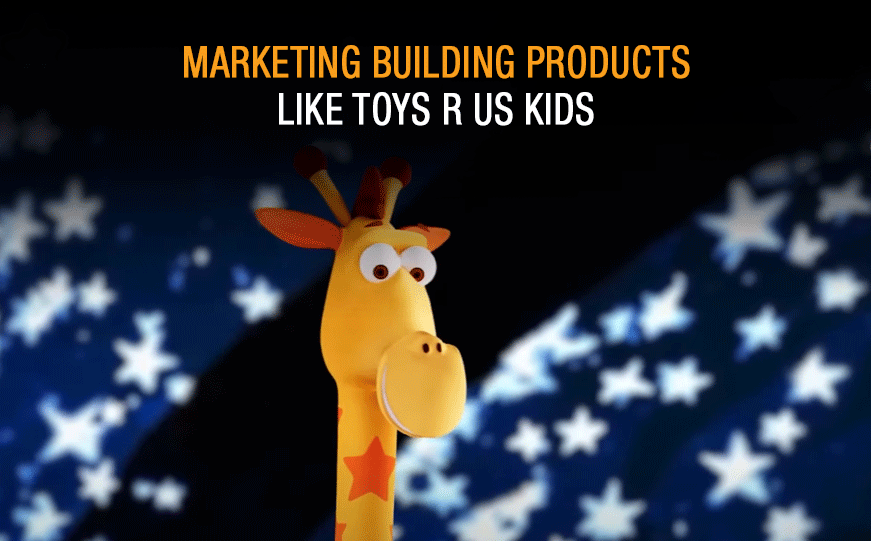It’s no secret that generative artificial intelligence tools are the Next Big Thing.
While some may perceive AI as a potential threat to job security – its integration into marketing strategies – presents a host of opportunities for those poised to adapt and innovate. A prime example for the transformative potential of this technology is a recent AI-generated video ad by Toys R Us… a marketing milestone that creates a baseline for what the future may hold for Building Product Brands.
Toys R Us – a onetime category killer – collapsed spectacularly in 2018. Competition from online retailers and excess debt brought it to its knees. Yet today, the name continues to live on as a rebranded toy department at Macy’s department stores. The creative team at Toys R Us used a tool called SORA (developed by OpenAI), and designed this entire ad out of, well pretty much nothing, but thin air. The music. The voiceover. The animation. Yes… all of it.
While it may not be shortlisted for any Addy or CLIO Awards, this creative product represents something far more important than how it works – or doesn’t work – as an ad.
Artificial intelligence is transforming marketing. AI’s ability to analyze vast amounts of data – by predicting trends and automating processes – offers unprecedented opportunities to enhance strategies. And influence outcomes.
Toys R Us is making headlines with its groundbreaking AI-generated video ad… which is probably the point in the first place. But more importantly, it showcases the capabilities of generative AI and offers a glimpse into the future. And it’s not just mere content for kids, either.
AI tools are already making significant strides into marketing for construction.
Putting AI to Work in Marketing
AI integrates into marketing plans through several key functions: Data analysis. Customer segmentation. Predictive analytics. And content generation.
Marketers use AI to gain deeper insights into customer behavior… enabling more targeted and effective campaigns. For instance, AI algorithms can analyze past purchasing patterns – leveraging online behavior and demographic data – to predict future buying trends. These tools currently can tailor strategies and programs with a precision that can’t be shortcut.
In audience segmentation, AI helps identify and categorize customers based on various attributes. This capability allows marketers to create more personalized messages – and incentive offers – improving engagement and conversion rates. Predictive analytics can forecast future customer behaviors and trends… enabling much more proactive marketing strategies.
AI in Building Product Marketing
For builder products, AI offers unique advantages. Aligned sales and marketing professionals now can leverage AI to enhance product recommendations. Improve customer interactions. And optimize more effective prospect campaigns. Consider for instance, the way an AI-powered chatbot can provide immediate responses for frequently asked queries – to enhance customer service experiences – and improve loyalty.
What’s more, AI’s ability to analyze large datasets helps identify market trends and likely customer preferences… accelerating more relevant product development and launch strategies.
Real-Life Examples of AI in the Built Environment
Several large architecture firms and builders have integrated AI into their workflows. The Obayashi Corporation – a leading Japanese construction company – has developed an AI-based system called “AIM” (Artificial Intelligence for Maintenance) to monitor and maintain infrastructure. This AI system analyzes data from sensors installed in buildings to predict maintenance needs. And prevent failures. AIM helps extend the lifespan of structures… while reducing operating costs.
Foster + Partners – the global architecture and design firm – similarly leverages AI to create smarter and more responsive buildings. AI technologies are being integrated into building management systems to monitor and control lighting, temperature and security. These AI-driven systems can learn from occupant behaviors and environmental conditions to optimize building performance. And enhance user comfort.
And finally, Forma, AI software from Autodesk, assists architects and urban planners in designing optimal site layouts. The software uses AI to analyze various factors, exploring multiple design options – such as sunlight, noise, wind and zoning regulations – to help architects create designs that maximize space utilization while improving environmental quality.
The innovative use of AI by leading architectural and construction firms underscores the transformative potential of this technology… across the built environment.
And just as AI is reshaping architecture and construction, it is poised to redefine how building products are marketed… offering tools and capabilities that enhance efficiency, personalization and effectiveness.
If you’re interested in exploring how artificial intelligence can enhance your own building materials marketing, we’re here to help. Send an email to Steve at sk@kleberandassociates.com to get the conversation started.




